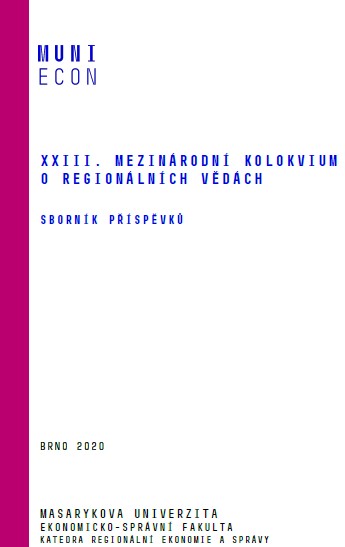HOW HAS TIME PROGRESSED WITH THE EU REGIONAL COMPETITIVENESS INDEX? CONTINUED NUMBER 2. WHAT CHANGE DID THE LAST EDITION OF RCI 2019 BRING?
HOW HAS TIME PROGRESSED WITH THE EU REGIONAL COMPETITIVENESS INDEX? CONTINUED NUMBER 2. WHAT CHANGE DID THE LAST EDITION OF RCI 2019 BRING?
Author(s): Lukáš Melecký
Subject(s): Business Economy / Management, Regional Geography, Evaluation research, Economic development, EU-Approach / EU-Accession / EU-Development, Socio-Economic Research
Published by: Masarykova univerzita nakladatelství
Keywords: convergence; divergence; edition; EU; NUTS 2 region; regional competitiveness index;
Summary/Abstract: Regional Competitiveness Index (RCI) has been measuring the significant factors of competitiveness over the past ten years for all the NUTS 2 level regions across the European Union (EU). RCI measures with more than 70 comparable indicators the ability of a region to offer an attractive and sustainable environment for firms and residents to live and work. RCI results are standardly illustrated with interactive maps and a range of interactive web tools, which is attractive as well as for the public. The scorecards make it easy to compare any region with the EU and regions with a similar level of GDP per head. Users can easily see where their region stands on aspects such as governance, infrastructure, including the digital networks, health, human capital and labour market and innovation. RCI results confirm a polycentric pattern with a strong performance of most capitals and regions with large cities, that benefit from agglomeration effects, better connectivity and high levels of human capital. Other regions in the same country in some cases, score much worse. The north-west and south-east divide across the EU is still clear and visible. The paper aims at comprehensive analysis of RCI approach is performed by the systematic review across the editions. Results show that comparing RCI over time is complicated because all editions incorporate slight modifications. The authors of RCI try to keep changes to a minimum so as not to affect its overall structure and to maintain a high degree of comparability across the editions. However, despite all its shortcomings, RCI proved to be a robust way to summarise many different indicators into one index.
Book: XXIII. mezinárodní kolokvium o regionálních vědách: Sborník příspěvků
- Page Range: 40-48
- Page Count: 9
- Publication Year: 2020
- Language: English
- Content File-PDF

